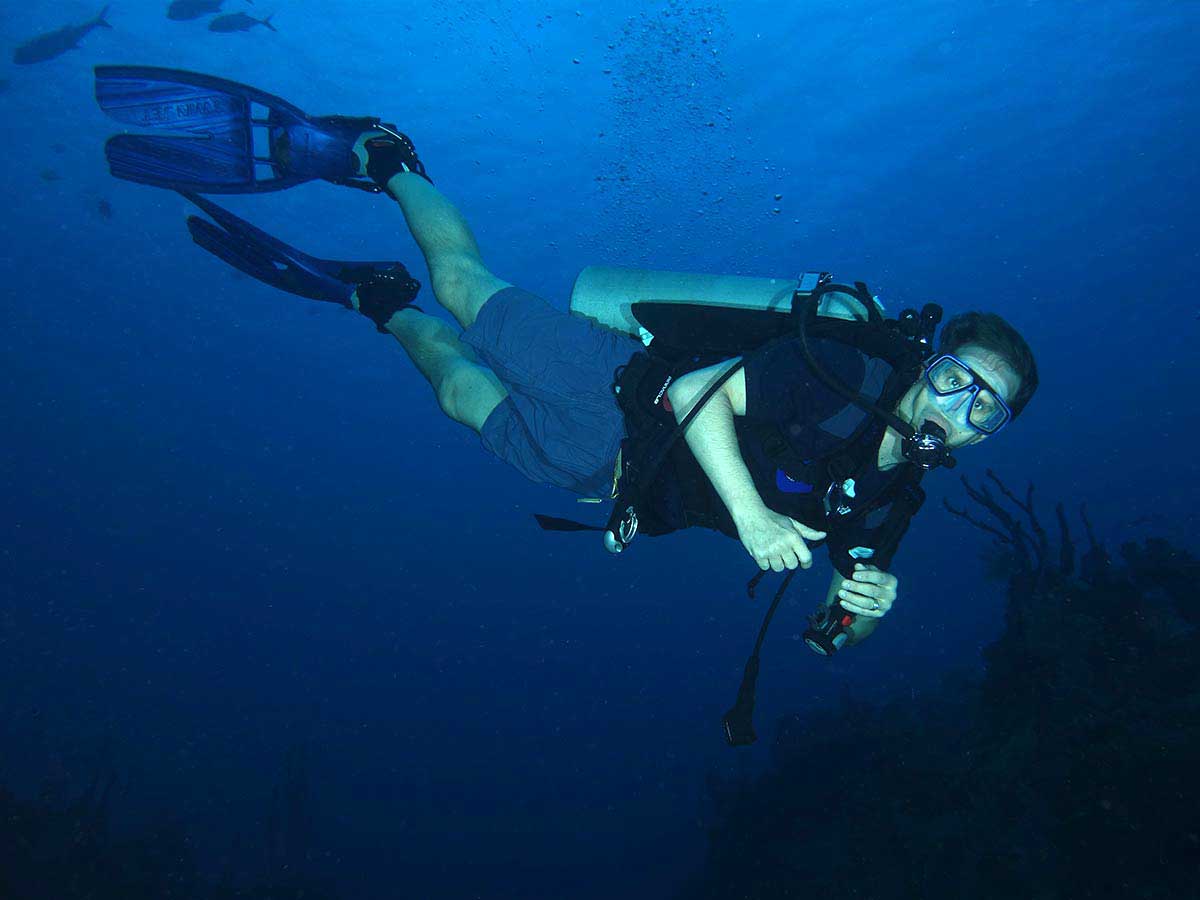COURSE AUTHOR
John Sparks

Dr. John Sparks is the Curator-in-Charge of the Department of Ichthyology in the Division of Vertebrate Zoology, a Principal Investigator with the Institute for Comparative Genomics, and a Professor in the Richard Gilder Graduate School at the American Museum of Natural History.
Sparks travels the world in search of marine organisms that glow. His research focuses on the evolution and function of marine bioluminescence (the ability of living things to produce their own light) and biofluorescence (the ability of living things to reemit light in different wavelengths). He’s particularly interested in the role that these phenomena play in the diversification of both shallow-reef and deep-sea fishes. Sparks also studies the systematics and biogeography of bony fishes, the endangered cavefishes and cichlids of Madagascar, and the evolution of specialized hearing in marine and freshwater fishes.
Sparks’s interest in fishes began in his childhood in southeastern Michigan, where he kept tropical fishes (especially cichlids) and loved to go fishing. “I never thought it was possible to make a living studying fishes, and it took me quite a while to realize that it was feasible,” he says.
After earning a BA in economics at the University of Michigan, Ann Arbor, he moved to southern California and worked in the aerospace industry for several years. But the cichlids called him back to graduate school at the University of Michigan, where he received a PhD in ecology and evolutionary biology in 2001 for his work on the evolution of Malagasy cichlids. He came to work at the Museum the following year, and has been here ever since.
Over the past two and a half decades, Sparks has led numerous expeditions to Madagascar, where his work focuses on the diversity and biogeography of the island’s endangered freshwater fishes. “It’s important to me when my research/fieldwork plays a role in establishing conservation priorities,” he says. In addition, he has conducted fieldwork on marine and freshwater fishes in the Indo-Pacific region, throughout Southeast Asia, South America, the Western Atlantic, Eastern Pacific, the Caribbean, and Arctic.
“I really enjoy going to remote places and exploring habitats that have never been studied,” Sparks explains. And when he says “remote,” he’s not kidding. In his recent fieldwork, he’s sought out new, blind species in caves and sinkholes in Madagascar that required technical rock climbing to access. He’s ridden a submersible far down into the lightless depths of the ocean near the Solomon Islands and Brazil to study the marine creatures that pierce the darkness with their bioluminescence—and on one of those dives, a nearly 20-foot bluntnose sixgill shark rammed the vessel at 700-meter depth. And he’s braved the frigid waters under the ice in Greenland in search of biofluorescent creatures. “I will never cease to be enthralled by the discovery of new species,” he says, “especially deep-sea fishes, which are so strange.”
Sparks finds surprises everywhere. “I like focusing on a poorly studied group of organisms and learning all I can about them,” he says. “Groups that I thought were boring at first (e.g., ponyfishes) have turned out to be the most interesting and most worthy of researching. Never dismiss anything without first learning as much as you can about it.”